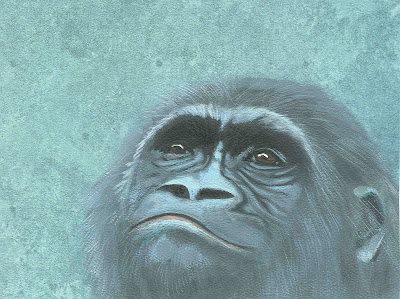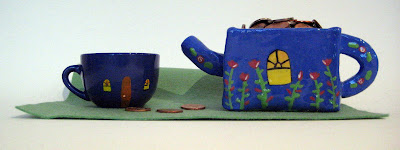Karina Fabian is having a whirl wind tour with Magic, Mensa & Mayhem. And, it is my pleasure to take part by hosting this talented author today.
To start, I'll give you the lowdown on Magic, Mensa & Mayhem:
Title: Magic, Mensa & Mayhem
Author: Karina Fabian
Publisher: Swimming Kangaroo
[email protected]
Tel: 817-717-5375
Fax: 817-548-1473
Genre: Fantasy
Released: Marc h 2009
Retail Price: $13.99 (print- US) 11.99 pounds (print – UK)
$3.99 (electronic)
ISBN: 978-1-934041-78-9
Available soon from Ingrams, Amazon and Kindle
Publisher's Weekly: Religion and humor suffuse this well-imagined and densely plotted comedic mystery, based on a short story of the same title. Cursed by St. George to serve the Faerie Catholic Church, dragon detective Vern now sleuths in the mundane world. His latest (unpaid) assignment is to babysit a group of faeries attending a Mensa meeting. Vern quickly has his claws full juggling crises, from invisible brownies to two elves whose rivalry threatens to become interdimensional war. Distinctly memorable and occasionally silly supporting characters, from Brunhilde the Valkyrie to Native American trickster Coyote, steer the action. While the conclusion sticks perilously close to genre formula and the narrative is jumpy throughout, most readers will forgive the clichés (and Vern’s groan-worthy puns) and chuckle all the way through.
Magic, Mensa & Mayhem made me laugh, everything from quiet chuckles to outright snorts. A quick read and an enjoyable one. --Jody Lynn Nye, author of An Unexpected Apprentice and the Myth, Inc series
…."Wisdom of the Ages, Knowledge of Eternity, and I end up a babysitter at the Smart Humans' Convention."--Vern
Now, we'll learn a bit about Karina Fabian:
Although a Mensan, KARINA FABIAN lives a life of "F’s" — Family, Faith, Fiction & Fun. Winner of an EPPIE award for best sci-fi (Infinite Space, Infinite God) and a Mensa Owl for best fiction ("World Gathering: Magic, Mensa and Mayhem"), Karina’s writing takes quirky twists that amuse her — and her readers. A fan of comedy improv, she came up with Dragon Eye, PI, started after watching a film noir skit on Whose Line Is It, Anyway? and it has grown into one of her favorite worlds to write in. Learn more about Karina at Fabian Space and more about Vern and Grace at Dragoneye PI. Karina lives with her husband and children at Minot AFB, North Dakota.
As an added bonus, Karina has graciously answered a couple of questions for us:
I know you present workshops on "worldbuilding" at a number of online conferences, what do attendees find the most difficult about creating worlds? And, what do you think is the most difficult?
Keeping a consistent logic is one of the biggest challenges, I think. There's a temptation to toss in whatever seems cool without following the effects through. If everyone is psychic, how does politics differ? Do you really need telephones--or any kind of communication device?
For example, if you set up a world where natural disasters have destroyed most of the world, then you need to consider how that affects the number of survivors, the technological backsteps, the government structures, etc. By the same token, is it logical to assume we'd revert back to a feudal society, totally disregarding centuries of socio-political change? It's up to the author, but it should be a reasoned, not flip, decision.
I believe when you think these things through, you get a better book, too.
Do you think it takes a certain type of writer to grasp world building?
No. Each will come at it his or her own way, however. Some will research and adapt; others will daydream and seat-of-the-pants write. It's easier for some than others, of course. Also, the needs of the story or book determine the level of worldbuilding. Even some science fiction and fantasy stories really don't need to go beyond the ray-gun or wizard level. The world is unimportant to the story.
Have you ever started a world and then just realized it wasn't working?
Yes and no. I have a world, Barin, that I (in my inexperience) just tossed out because it sounded cool. Now I'm having to go back and think about all the effects of the things I decided--the regular catastrophe that leaves most of their world uninhabitable above ground, the fanatical cult that's taken over one country and influences the others. Of course, the things I'm discovering have taken it from "cool" to "Way Cool," but it's also like putting together a puzzle when the pieces don’t quite want to match. It's on hold for now while I work other projects.
Thanks so much, Karina. This is great information for those writers who are thinking of venturing into the unknown of worldbuilding. And, thank you for spending the day with us.
Be sure to get yourself a copy of Karina's Magic, Mensa & Mayhem!
See you in blog world,
Karen
Viewing: Blog Posts Tagged with: theory, Most Recent at Top [Help]
Results 1 - 11 of 11
Blog: Writing for Children with Karen Cioffi (Login to Add to MyJacketFlap)
JacketFlap tags: Mensa, Karina Fabian, Magic, fantasy writer, Mayhem, world building, Add a tag
Blog: Sugar Frosted Goodness (Login to Add to MyJacketFlap)
JacketFlap tags: Photoshop, Jason Bronkhorst, Mensa, Add a tag

A little illo about some Mensa folks, they usually think they're a bit brighter than they are, don't they?
My blog
Blog: Whateverings (Login to Add to MyJacketFlap)
JacketFlap tags: string, cats, Illustration Friday, cartoon, Cartoons & Comics, cat, theory, Add a tag
Blog: Sugar Frosted Goodness (Login to Add to MyJacketFlap)
JacketFlap tags: SFG: Joy, tyrannosaurus rex, dinosaur, "illustration friday, theory, Add a tag
 DANCE LIKE THERE'S NO TOMORROW or
DANCE LIKE THERE'S NO TOMORROW or
The joyful unawareness of extinction
My dinosaur extinction theory:
Personally, I blame the tyrannosaurus rex. So fond of raves were these behemoths. So oblivious of their surroundings were they. While gyrating and stomping about to their trancey, music, these scaly party goers never even noticed the giant earthquakes that resulted from their dance party. The seismic activity that followed tripped a volcano or two and set off a chain reaction of further volcanic eruptions. The climate change brought about by the post-rave eruptions, is, what I believe caused the extinction of the dinosaurs.
Look it up.
...............................................................
The Illustration Friday theme this week is "Theory" and the Sugar Frosted Goodness challenge is "Joy." So I thought I'd kill two birds with one stone.
Blog: Monday Artday (Login to Add to MyJacketFlap)
JacketFlap tags: josh pincus, theory, Add a tag
This skit features Graham Chapman as a television interviewer and John Cleese in preposterous drag as the palaeontologist, Anne Elk.
The plot of the skit is that the interviewee, Anne Elk, cannot bring herself to describe the actual basis of her supposed new palaeontological theory on brontosauruses. Ms. Elk spends most of the interview clearing her throat and making assertions like "My theory, which belongs to me, is mine."
In the end, Miss Elk's theory on brontosauruses is revealed as "All brontosauruses are thin at one end, much thicker in the middle and then thin again at the far end." Her true concern is that she receive full credit for devising this new theory stating, "That is the theory that I have and which is mine and what it is, too." The interviewer, is disbelief, answers, "Well, Anne, this theory of yours seems to have hit the nail right on the head." To which Anne adds, " ... and it's mine."
The skit coined the concept of "Elk Theories" to describe scientific observations that are not theories but merely minimal accounts.
Blog: A Latte a Day (Login to Add to MyJacketFlap)
JacketFlap tags: theory, Maggie Summers, "children's illustration", "blind contour", "car wash", "car wash", "blind contour", Illustration Friday, Maggie Summers, theory, "children's illustration", Add a tag
Blog: studio lolo (Login to Add to MyJacketFlap)
JacketFlap tags: animal souls, soulful, gorilla, ape, theory, animal souls, soulful, ape, illustration friday, theory, gorilla, Add a tag
Blog: ValGal Art (Login to Add to MyJacketFlap)
JacketFlap tags: Valerie Walsh, theory, teacup, "HOME", clay, Chinese Feng Shui, teahouse, Illustration Friday, teapot, Valerie Walsh, theory, clay, teacup, "HOME", Chinese Feng Shui, teahouse, Add a tag
Blog: DRAWN! (Login to Add to MyJacketFlap)
JacketFlap tags: Design, Creativity + Ideas, Resources, How-To, Theory, Add a tag
A British design firm has released a design manifesto (PDF) for sustainable design. It’s a bit too much of a brochure for my taste, but it’s worth thinking about, so here`s a summary:
1. Re-think
2. Re-use
3. Use eco-friendly materials
4. Save energy
5. Share new ideas
6. Design to last
7. Stay local, buying ethical
8. Support what we believe
9. Inspire, have fun
10. Save money
Treehugger comments:
Perhaps the most important note about this manifesto, is the knowledge that there is something that they can do with every project, every client, every day, to lighten their footprint and help fight global warming. And that’s a lesson we can all take something from.
Also check out the Ten Commandments of Sustainable Design.
This also seems like the right time to mention Luz: Girl of the Knowing - a new webcomic from Claudia Dávila. Luz is an environmentally-conscious comic about a girl who is on a mission to gather “the knowing”: knowledge and experience about sustainable survival for humans, specifically in urban centers.
Blog: DRAWN! (Login to Add to MyJacketFlap)
JacketFlap tags: Illustration, Caricature, Cartooning, Art History, Theory, Add a tag

DB Dowd, previously blogged for his thread on the difference between cartoon and illustration, has expanded his ideas into a chart showing the various branches of reproduced image production. He writes,
“Frustrated by the lack of a larger narrative in which to locate genres, careers, and achievements, I have been working on visualizations of the development of commerical images.”
I’ve been writing some responses to this chart, as I think it is both helpful and problematic. But I’d like to see the discussion broadened by others. As imaginative visual media continues to grow in popularity in animation, web graphics, print, and gallery, I think it’s really important that we the creators contribute to how we understand our work in the world, theoretically and historically. If we don’t, someone else will - likely someone who can’t draw and who will pigeonhole us in unfavorable ways, as happened in art history in the past.
Blog: The Mumpsimus (Login to Add to MyJacketFlap)
JacketFlap tags: science fiction, Delany, genre, theory, Add a tag
Susanna Mandel offered a thoughtful column at Strange Horizons this week, "On SF and the Mainstream, or, Rapidly Changing Scenery", writing from the perspective of someone who hasn't had the chance to keep up with a lot of what's been going on in the science fiction/fantasy community over the last five or so years. I sympathized a lot, having started this blog, in fact, as someone in just about exactly that position. (I'm really interested, too, to see what she's going to discuss in her future columns, which she says will be about pre-1800 writings.)
Richard Larson was inspired by the column to ask for some discussion that moves beyond content to probe the differences between SF and other sorts of things:
I would love for someone to be engaging the SF/mainstream literature discussion with the goal of making formal distinctions, of ignoring content completely and trying to figure out how the experience of reading mainstream literature differs from that of reading genre fiction, and what formal factors are contributing to that experience.Earlier, Paul Di Filippo posted the results of a panel at Readercon about a "slipstream canon", and Paul Kincaid responded, raising the point that there's hardly any such thing as a "pure genre" (no matter how you define "genre") and that the "canon" is a fine list of wonderful things to read, but these aren't texts that really have a whole lot in common.
Sarah Monette responded to both the list and to Kincaid's response by wondering if "genre" isn't the wrong word, and misleading. She proposes "modality" instead:
Contrarealism--or unrealism--(science fiction, fantasy, supernatural horror, magic realism . . . slipstream) is a modality. Because these things inflect a story on a level a priori to the narrative itself. If a genre is a kind of story, a modality is a kind of approach to a story. You can tell the same story in any modality. E.g., Cinderella. You can tell it as Coal Miner's Daughter (realism). You can tell it as a pararealistic Horatio Alger story. (Which I suppose some may argue is what Coal Miner's Daughter is. Not actually having seen the movie, I can't testify personally. The new Will Smith thing about the homeless man who becomes a stockbroker is also Cinderella. Realistic or para-?) Or you can tell it as a fantasy (Disney!). (I'm sure also that you can tell it as a science fiction story ... ooh, wait. Psion.) The narrative elements will not change. (Whereas, if you tell Cinderella as a horror story, the narrative elements do change. Hence we conclude that horror is a genre. QED.)It's worth also bringing into this some of the reviews of Interfictions
Meanwhile, the old New Weird discussions have been made public once again.
Okay, so there's a bunch of stuff. And it all brings me back to what Richard Larson asked -- how does the experience of reading something called X differ from the experience of something called Y (or not-X)? That's a question I find far more interesting than how to define X, Y, and not-X.
It all brings me back, as so much does, to Samuel Delany, who has done a little bit of what Larson seems to be looking for (mostly in Starboard Wine, which is very difficult to get hold of, but it will be generally available again either in the fall of 2008 or spring of 2009. More on that later).
Delany has called SF a "field phenomenon" that can only be described, not defined. He has argued that "There's no reason to run SF too much back before 1926" because
More, Kepler, Cyrano, and even Bellamy would be absolutely at sea with the codic conventions by which we make sense of the sentences in a contemporary SF text. Indeed, they would be at sea with most modern and post modern writing. It's just pedagogic snobbery (or insecurity), constructing these preposterous and historically insensitive genealogies, with Mary Shelley for our grandmother or Lucian of Samosata as our great great grandfather.(Adam Roberts has an interesting take on this in his history of science fiction, but I'm no longer near the library I borrowed the book from, and my memory of it is too unspecific to be able to paraphrase accurately.)
In one of his most important essays, "Dichtung und Science Fiction" (in Starboard Wine), Delany says, "For an originary assertion to mean something for a contemporary text, one must establish a chain of reading and preferably a chain of discussion as well." In another essay, "Science Fiction and Literature", he states, "To say that a phenomenon does have a significant history is to say that its history is different from the history of something else: that's what makes it significant."
I've said before that where a text is published can affect how it is read, including how it is categorized and understood by the reader. We see that in some of the reviews for Interfictions, where many of the stories are judged based on the purpose of the anthology, which of course is justifiable, but I also wonder how at least some of them would fare in an entirely different context. In fact, much of what is new about what's happening in the SF community right now -- the changes Susannah Mandel and others notice -- may be more the creation of new contexts than the creation of new types of fiction (about which I've got some of the same questions as Dan Green poses in his review and Paul Kincaid raises in his response to the "slipstream canon").
I'm wary of a form/content distinction, because it seems to me more an occasionally-useful illusion than an idea that really fosters good analysis, but how texts create reading experiences, and how those experiences change in different eras and circumstances does, indeed, interest me. That's an idea worth applying to those New Weird discussions -- what were the circumstances that made such discussions so energetic, combative, and sometimes insane? What was the effect of those discussions on writers' practices (if any), and why does it matter? Was the New Weird a momentary blip, more passion than substance, or was it a historically important argument/label/concern/whatever? What was it trying to be different from, and why?
If we want to map the topography of literary history, including all the little hills and dales, then texts alone will not explain vastly different reading experiences, because the contexts in which the texts are produced, distributed, received, and discussed contribute to that history. Such a conversation would, I think, allow more insight than yet another argument about how to define and delineate different types of fiction based on the texts alone, or on some mythical essential qualities those texts are supposed to possess.








Thanks for the post! If your readers have any questions, please let me know!
Blessings,
Karina Fabian
Will do, Karina!
Karen